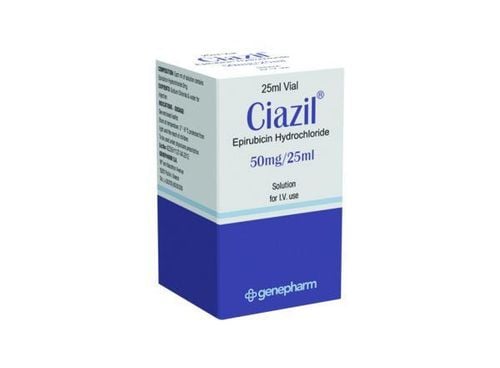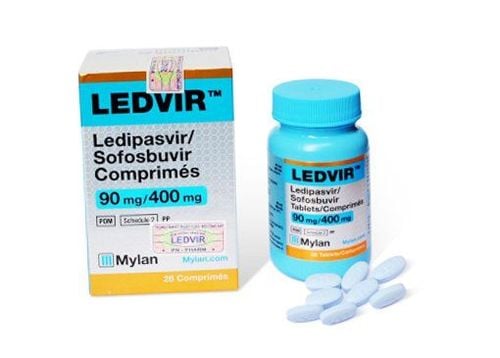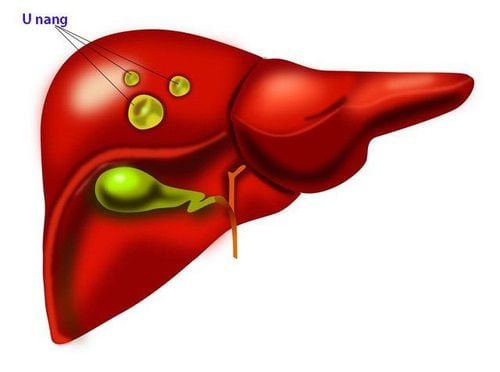This is an automatically translated article.
The article is expertly consulted by MSc Duong Xuan Loc - Gastroenterologist - General Surgery Department - Vinmec Danang International General Hospital.A liver cyst is a condition in which the sacs of the liver are filled with fluid. Liver cysts often have no specific signs and symptoms, so it is difficult for us to detect the disease. In many cases, liver cysts can be congenital, often grow slowly and go undetected until adulthood.
1. What is a liver cyst?
Normally, in the human liver, there are vesicles, when liver cysts, these sacs will be filled with fluid or mucus. In a small area of dead or degenerated liver cells, cysts form and grow.Liver cysts often have specific or obvious signs, patients only accidentally discovered cysts during ultrasound, computed tomography (CT) or magnetic resonance imaging (MRI) in the abdomen.
However, the patient should not worry, liver cysts are not a sign of liver disease. If the patient finds 1 or 2 cysts in the liver, no treatment is indicated. Unless, in your liver, there are more cysts with large size, the patient needs to go to the hospital for thorough treatment to stop the pain and discomfort in the upper right abdomen.
The cause of cysts is often unknown, but it can stem from diet, unscientific lifestyle and age problems, with the elderly, liver cysts are at risk appear more. In many cases, liver cysts can be congenital, often grow slowly, and go undetected until adulthood.
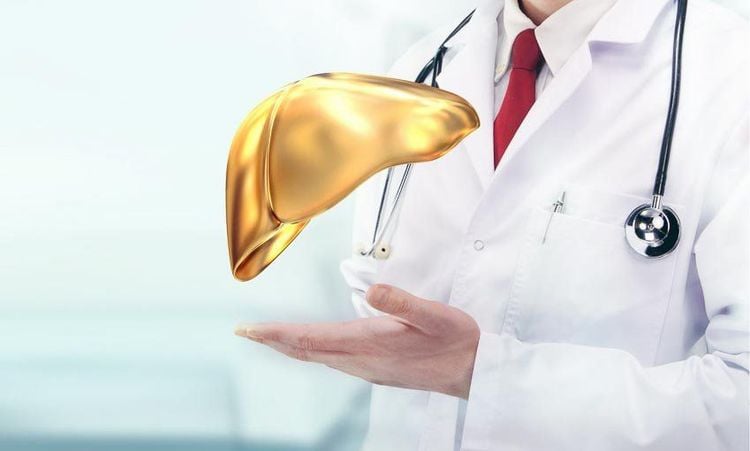
2. How to distinguish cysts in the liver
There are many types of liver cysts, each with different symptoms and treatments, such as:Simple cysts; Polycystic liver disease (an inherited disease); Cysts caused by parasites (such as cysticercosis); Cysts occur in association with liver cancer.
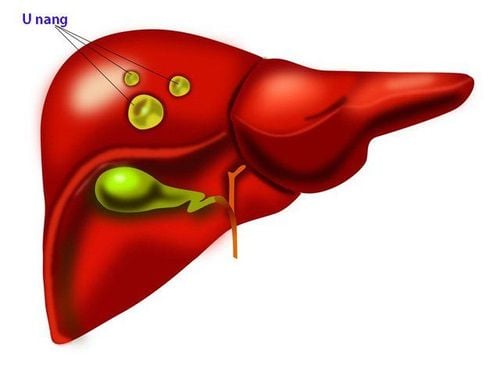
Simple cysts: are congenital cysts, usually a disease that heals on its own without interventional treatment methods. In fact, when a simple cyst is present, the patient will have pain in the right upper quadrant of the abdomen. As the cyst develops, the abdomen becomes enlarged, even palpable. These cysts are lined with epithelium of the same type as the biliary tree, but the fluid in the cyst does not contain bile. Because cyst fluid is secreted continuously, cysts repopulate after aspiration or drainage.
When experiencing the above symptoms, the doctor will order an ultrasound, CT scan (computed tomography) and MRI (magnetic resonance) which can show the anatomical image of the cyst from which to give treatment. suitable treatment. It can be treated with aspiration or sclerotherapy, laparoscopic surgery or open surgery to open the cyst (fenestration).
Polycystic liver disease: is also a congenital disease, but is accompanied by polycystic kidney disease and is often associated with autosomal dominant inheritance with mutations in PRKCSH and SEC63 genes or PKD1 and PKD2 genes. . Therefore, when conducting tests, both kidney and liver function will be checked by ultrasound, CT scan and MRI to help diagnose polycystic liver.
Polycystic liver disease is treated by methods: biopsy, aspiration, fibrosis, even liver transplantation.
Cysts (cyst neoplasia): often have no obvious symptoms, or the disease has symptoms similar to other diseases such as abdominal distention, nausea and feeling of fullness, abdominal pain and biliary obstruction. The treatment for a cyst is to remove the tumor, but it can recur after it is completely removed. cysts (caused by echinoccocus parasites): this is a disease caused by infection with the parasite echinococcus granulosus – a tapeworm. The disease causes jaundice or cholangitis, ruptures through the diaphragm into the chest, or ruptures into the abdomen causing anaphylaxis, secondary infection, and liver abscess.
Cysts and hepatic cysts are generally asymptomatic, or may present with pain in the right upper quadrant.
Trắc nghiệm: Làm thế nào để bảo vệ lá gan khỏe mạnh?
Làm test trắc nghiệm kiểm tra hiểu biết về gan có thể giúp bạn nhận thức rõ vai trò quan trọng của gan, từ đó có các biện pháp bảo vệ gan để phòng ngừa bệnh tật.3. Manifestations and treatment of liver cysts
In general, liver cysts do not have specific, obvious signs of the disease. Only when the cysts grow in size and appear many cysts, they cause some pain and discomfort for the patient. However, the signs of this symptom are similar to many other diseases, so it is difficult to detect. Enlarged cysts can cause bloating and pain in the upper right part of the abdomen. Sometimes, liver cysts are so large that you can feel them in your abdomen.Therefore, in order not to cause dangerous complications as well as eliminate the pain that liver cysts cause, you should see a doctor for treatment advice.
After hearing about the symptoms of the disease, ordering tests, the doctor will know what type of liver cyst you have for effective and inexpensive treatment.
If detected in time and early, then most cysts will resolve on their own without any indication of treatment. In case, the cyst grows large, the patient is indicated surgical removal, this is the best treatment method. The doctor can perform drainage, but the effect is only temporary. In some patients with polycystic liver disease, they will need a liver transplant.
In particular, patients with parasitic cysts that cause pinworms are usually treated with surgery and medication for up to two years to relieve symptoms.
Currently, Vinmec International General Hospital is implementing Packages for screening and early detection of liver cancer suitable for many subjects at risk of different diseases, including the package of liver cancer screening - developing liver cancer. Early detection of cancer without any symptoms. When registering for the package of screening and early detection of liver cancer, customers will receive:
Examination and consultation with an oncologist through an oncology appointment. Peripheral blood cell analysis. Assess liver function through tests such as measuring ALT activity (GPT), measuring AST activity (GOT), measuring GGT activity (Gama Glutamyl Transferase), measuring total bilirubin. Screening for hepatitis B and C virus infection through rapid HBsAg test and automatic immunological HCV Ab test. Screening for liver cancer through the quantitative test of AFP (Alpha Fetoproteine). Screening for liver tumors by abdominal ultrasound (general). Master. Doctor Duong Xuan Loc has more than 12 years of experience as a Gastroenterologist and is currently a Gastroenterologist at the Department of General Surgery - Vinmec Danang International General Hospital.
Please dial HOTLINE for more information or register for an appointment HERE. Download MyVinmec app to make appointments faster and to manage your bookings easily.





